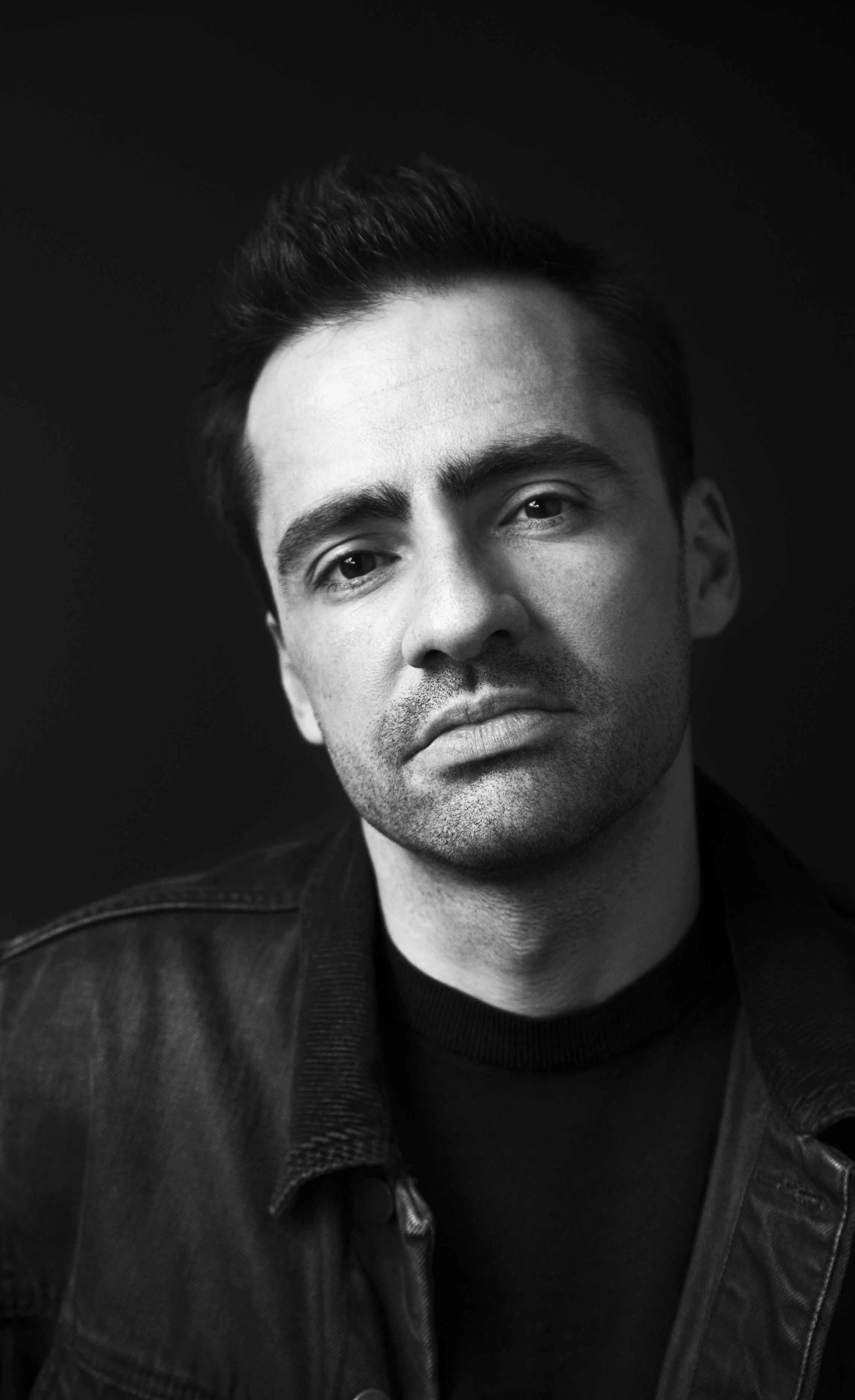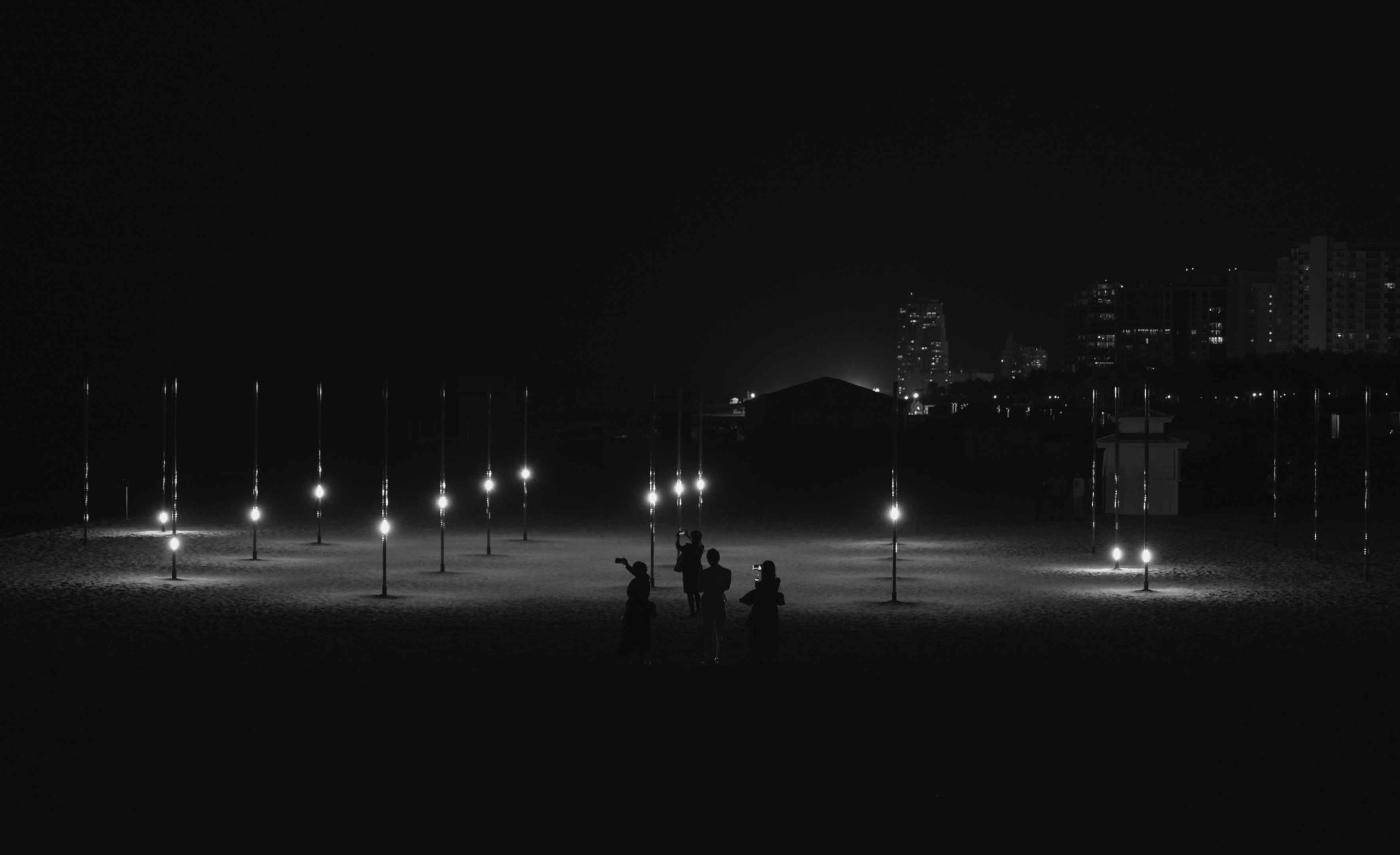
From Robert Irwin to James Turrell, the artists of the Light and Space movement, which originated in Southern California in the 1960s, focused on the viewer’s experience of light and other sensory phenomena. These artists, many of whom are still working today, utilize and manipulate both natural and artificial light as their medium, embedding it within various spaces, objects and architecture to create installations often influenced by the works’ surroundings.
“I would say the location is probably 90 percent of the project; for me it’s the core,” says Pablo Valbuena, sitting in a penthouse suite overlooking Miami’s iconic South Beach where he erected Wave, a two-day light installation inspired by the work of Irwin and Turrell, during Art Basel last December. “The city of Miami is structured by its relationship with the coast, with the vastness and emptiness of the ocean on one side and the dense streets full of activity on the other,” says the Spanish artist, citing the Light and Space movement as a foundational reference for his latest large-scale piece—a highlight of the busy fair week. “With the ocean at night as a background and the natural soundscape of the waves reaching the coastline, it provides the perfect context to work with light and sound.”

Born in Madrid in 1978 and currently based in the South of France, Valbuena is known for his site-specific installations that explore the intersection of reality and perception. “I sculpt time,” he says of his work, which often incorporates technology, film and industrial materials and has been exhibited in public spaces and institutions around the world, including Ars Electronica in Linz, Austria, Vooruit in Ghent, Belgium and the Seoul Museum in South Korea. A graduate of ETSAM, the acclaimed school of architecture at the Technical University of Madrid, Valbuena incorporates light and sound into his projects because, he says, “they are the main channels that allow us to perceive time and space.” His practice aims to challenge those perceptions. “As an artist, I create situations for the observer that hopefully spark a shift in how we look at the world around us.”
Wave, an extension of the artist’s “Array” series, continues his pursuit of boundary-breaking perspective. The installation of 25 cylindrical poles encapsulating LED lights flashing in an undulating 12-minute cycle appeared to rise seamlessly from the South Beach sand, mimicking the ocean swells crashing beside it. Focusing on the moment of transformation in how something is seen, Valbuena utilizes mathematical functions often found in nature that viewers are visually and culturally conditioned to recognize. For this project, he selected a cycloid function of ocean waves to choreograph a dance of light emulating water on the crest of a wave moving in one direction, and water at the lowest point going the opposite way. Valbuena explains, “Light and its transformation in time are used to tap into our perception and generate a form—the wave—that only exists as a mental image in the mind of the observer.”
Wave is the result of a collaboration with Swiss luxury skincare company, La Prairie. After seeing Valbuena’s solo exhibition at Paris’s Le Centquatre early last year, La Prairie executives contacted the artist regarding a commission using the theme of the brand’s “Shape of Light” campaign. “I’ve done exhibitions where there was sponsorship, but I rarely work with brands directly,” says Valbuena, who was at first reticent to the idea of creating art to celebrate this month’s launch of White Caviar Eye Extraordinaire, a new eye cream formulated using the company’s latest skin luminosity technology and research on how the eye perceives light and shape. “From the beginning, I said, ‘These are my conditions: I want to do something where the goal is to make a high-quality art project outside of the fair, that is accessible to the public and free.’” To Valbuena’s surprise, La Prairie agreed.

“We believe the artist has to remain true to who he is and should have total freedom in his creation,” says Patrick Rasquinet, CEO of La Prairie Group, which began partnering with Art Basel in Europe three years ago and expanded to Miami in 2018. Rasquinet notes the brand’s ties to the arts dating back to the founding of its first clinic in 1931 and La Prairie’s “aesthetic godmother,” Niki de Saint Phalle, the French-American sculptor and painter who inspired its signature cobalt blue jars. In addition to covering the financial costs, the company helped with attaining permits as well as with the fabrication and installation of the piece. “I’m interested in working in context, and this type of public project requires the logistics and the energies of many different people—it’s not easy to make it happen—so having the brand is beneficial,” acknowledges Valbuena.
To achieve this “contextual” element in his work, Valbuena considers subtle details of a location, such as how time affects the space, how observers approach it and cultural references linked to the site. He says he seeks to “go further than a mere spatial immersion in an environment” and purposefully designed Wave to minimize the actual physical transformation of the space. “What we’re adding in terms of matter is minimal. It’s not a lot of materials. It’s just these thin lines in the middle of a patch of sand,” he says. His approach maximizes impact—evidenced by the crowds of fairgoers who flocked to the beach to experience Wave. “The way the installation changes the place is strong—it’s not something you can just forget. It’s changing the way you see that place rather than changing the place itself.”
Photos Courtesy of La Prairie










 in your life?
in your life?

